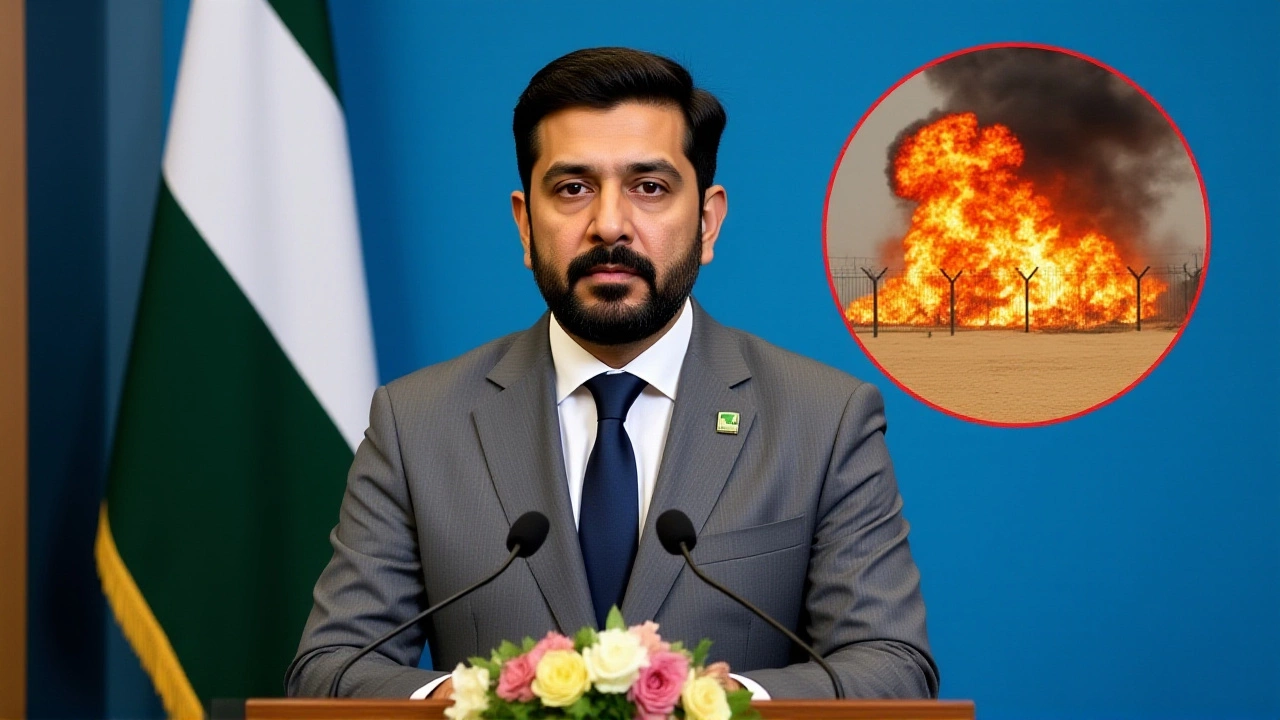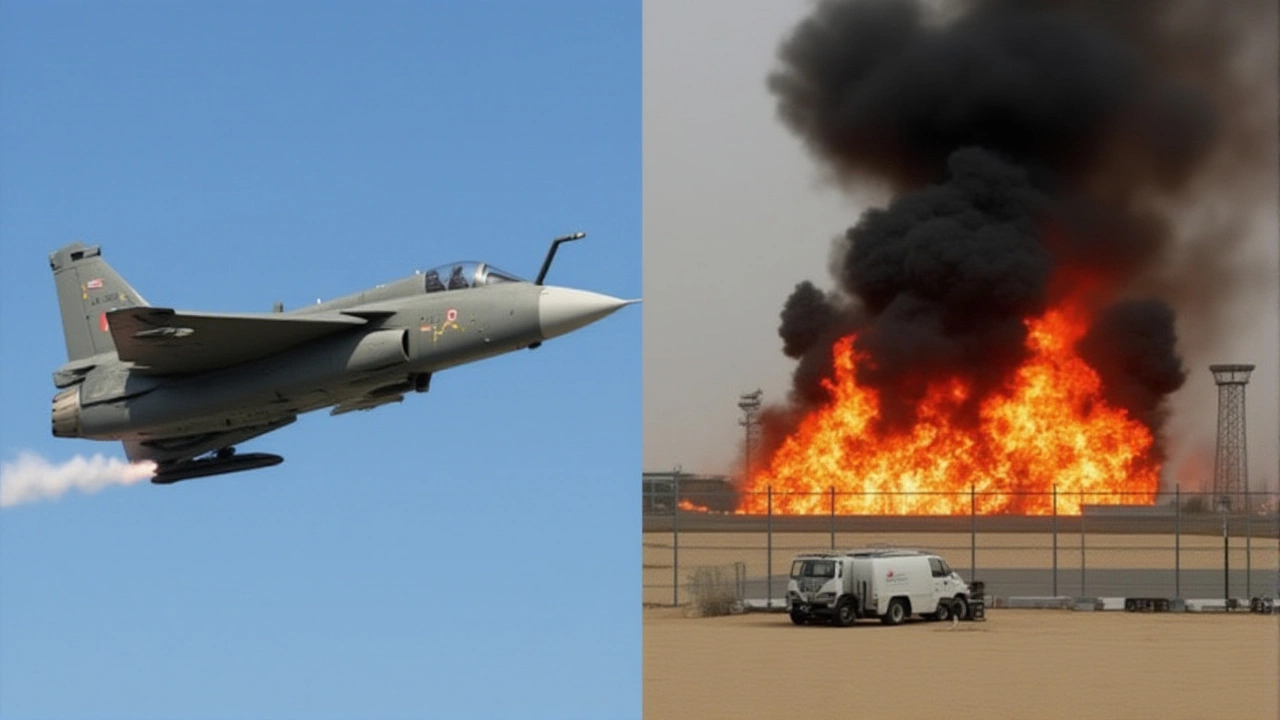At 2:11 p.m. local time on November 21, 2025, the sky over Al Maktoum International Airport in Dubai turned from spectacle to tragedy. A Hindustan Aeronautics Limited (HAL) Tejas Mk-1 fighter jet, piloted by Wing Commander Namansh Syal of the Indian Air Force, vanished in a fireball during a low-altitude aerobatic maneuver at the Dubai Air Show 2025Dubai. The crash claimed Syal’s life — the first fatality in the 23-year history of India’s indigenous fighter program. Witnesses described the jet banking sharply, then plunging vertically like a stone. No distress call. No warning. Just silence after the roar.
What Happened in the Final Seconds?
Eyewitnesses and video footage captured the moment the Tejas, performing a negative-G turn just 150 feet above the tarmac, lost control. The aircraft, designed for agility, suddenly refused to recover. Its nose dropped at a near-vertical angle, accelerating toward the ground. At 2:10:30 p.m., it was still in perfect formation. By 2:11 p.m., it was a burning wreck. The impact site, near Runway 12L, left a 30-meter crater and scattered debris across the tarmac. Emergency crews responded within 90 seconds, but the fire — fueled by 1,800 liters of jet fuel — burned too hot, too fast. The cockpit was incinerated. No chance of ejection.The Indian Air Force confirmed Syal was alone in the cockpit. His last known radio transmission was routine: "Tejas Seven, clear for final pass." No anomalies reported. No system alerts logged in the jet’s flight recorder — at least, not before the final 12 seconds.
The Man Behind the Helmet
Wing Commander Namansh Syal, 36, was not just a pilot — he was a symbol of India’s rising aerospace ambition. Born in Patialkar village, Kangra, Himachal Pradesh, he joined the Air Force in 2009 after graduating from the National Defence Academy. He flew over 1,200 hours in Tejas variants and was selected for the elite Suryakiran Aerobatic Team in 2023. His wife, also an IAF flight officer, was in Dubai watching from the VIP stand. Their six-year-old daughter had drawn a picture of her dad in a fighter jet — a drawing found in his flight bag after the crash.His father, a retired schoolteacher, was watching YouTube clips of the air show on his phone when the notification came. "I saw the fireball," he told The Economic Times. "I didn’t understand. I thought it was another jet. Then I saw the number — Tejas Seven. I knew. I just knew."
First Fatality in a 23-Year Program
The Tejas program, launched in 1984 to replace aging MiG-21s, has been India’s most ambitious defense-indigenous project. It’s flown over 1,800 sorties since entering service in 2016. There have been three non-fatal incidents since 2023 — two ground mishaps, one landing gear failure. But never a mid-air crash during a display. Until now.Defense analysts are divided. Some point to the jet’s fly-by-wire system, which has faced criticism for sensitivity in extreme maneuvers. Others note the Tejas Mk-1’s limited engine power — the GE F404 — struggles under high-G, low-altitude stress. But the most troubling question: Was this pilot error, or something deeper?
"The Tejas is a nimble fighter, but it’s not forgiving," said retired Air Marshal Ravi K. Mehta, who flew MiG-29s in the 1990s. "At 150 feet, if the angle of attack slips by two degrees during a negative-G, the computer can’t compensate fast enough. The pilot has to be perfect. And sometimes, perfection isn’t enough."

Global Reactions and Diplomatic Fallout
The crash sent shockwaves through the defense industry. The United Arab Emirates, which is evaluating Tejas for its own air force, immediately paused its procurement review. Malaysia and Argentina — both potential buyers — quietly delayed decisions. The Russian Air Force, ironically, paid tribute with a silent formation flight over Dubai’s skyline on November 24, honoring Syal as "a brother in the sky.""This isn’t just about one aircraft," said defense analyst Priya Desai in Singapore. "It’s about trust. If a country’s flagship fighter crashes during a global showcase, buyers ask: Is this reliable? Is this tested enough?"
HAL, for its part, issued a statement: "Our deepest condolences. We are fully cooperating with the IAF investigation." But insiders say the company is bracing for a PR storm. The Tejas was supposed to be India’s answer to the F-16 — affordable, modern, homegrown. Now, it’s a question mark.
What Comes Next?
The Indian Air Force has convened a Court of Inquiry, led by Air Vice Marshal Anil Sharma, with participation from HAL engineers and international observers from the U.S. and France. The report is expected in 60 days. But preliminary data from the flight data recorder — recovered intact — suggests the aircraft’s flight control software did not trigger a recovery command in the final 3.7 seconds before impact."That’s the smoking gun," said one anonymous source familiar with the investigation. "The system knew it was unstable. But it didn’t act. Why? Was the algorithm too conservative? Was the pilot overriding it? We don’t know yet."
The Dubai Air Show resumed two hours after the crash. The Indian team pulled out. The Tejas was gone. But its legacy — and its future — hangs in the balance.

Background: The Tejas Journey
Developed under India’s “Make in India” initiative, the Tejas began as a project to replace the Soviet-era MiG-21. After decades of delays, cost overruns, and technical setbacks, the first operational squadron stood up in 2016. Since then, 40 Mk-1 jets have been delivered. The Mk-1A variant, with improved radar and weapons, entered service in 2024. The jet was designed for high-altitude operations — perfect for the Himalayas. But low-altitude aerobatics? That was always a stretch.The Suryakiran team, which flew the Tejas for the first time in 2023, was chosen for Dubai because the IAF wanted to showcase India’s technological progress. Syal was their star. He had trained for six months for this display. His routine included a double Immelmann, a slow roll at 100 feet, then a split-S — all within 30 seconds. The final maneuver was the most dangerous: a negative-G turn, pulling 3.5 Gs, then instantly flipping into a dive. One wrong input. One delayed response. One second too late.
"He knew the risks," said Squadron Leader Vikram Rao, Syal’s teammate. "But he believed in the jet. He believed in India. That’s why he flew it."
Frequently Asked Questions
Was the Tejas jet faulty, or was this pilot error?
The investigation has not concluded, but early data from the flight recorder shows the aircraft’s flight control system failed to initiate a recovery command during the final 3.7 seconds before impact — despite detecting instability. This suggests either a software limitation or a pilot override. No mechanical failure, like engine or hydraulic issues, has been confirmed. The Tejas has had three non-fatal incidents since 2023, but never a mid-air crash during a display. The cause remains under review.
How does this affect India’s defense exports?
The crash has paused procurement talks with the UAE, Malaysia, and Argentina — all key markets for the Tejas Mk-1A. The UAE, which was considering a $2 billion deal for 30 jets, has officially delayed its decision. Exporters rely on public confidence, and a fatal accident during a global showcase damages credibility. HAL’s reputation as a reliable manufacturer now faces scrutiny, especially against competitors like the French Rafale and American F-16V.
What’s being done to improve Tejas safety?
HAL and the IAF are reviewing the flight control software’s response thresholds during low-altitude, high-G maneuvers. A software patch for the Mk-1A is already in testing, expected to be deployed by mid-2026. Additionally, aerobatic training protocols are being revised to limit extreme maneuvers below 200 feet. The Suryakiran team will not perform Tejas displays until the investigation concludes.
Why was the Tejas performing aerobatics at all?
The Tejas was never designed as a dedicated aerobatic jet — that’s the role of the Suryakiran team’s older Hawk trainers. But the IAF chose to display the Tejas Mk-1 to demonstrate its agility and India’s aerospace progress. The decision was controversial within defense circles. Critics argued it was unnecessary risk; supporters said it was vital for global perception. The crash has sparked debate over whether export marketing justifies pushing prototypes beyond their intended limits.
What happened to Wing Commander Syal’s family?
Wing Commander Syal’s wife, also an IAF officer, was granted compassionate leave and is receiving full military support. Their six-year-old daughter is being cared for by her maternal grandparents in Chandigarh. The Indian government has approved a compensation package of ₹1.2 crore (about $145,000 USD) and a full pension for his wife and daughter. His parents were honored with a state funeral in Kangra on November 23, 2025, with full military honors, including a 21-gun salute and a missing-man formation flyover.
When will the final report be released?
The Court of Inquiry is expected to submit its findings by January 20, 2026. The report will be classified, but a public summary will be released by the Ministry of Defence. International observers from France and the U.S. are participating, and their input will be included. If the cause is determined to be systemic — such as a software flaw — HAL may face mandatory redesigns and delays in future Tejas production.
